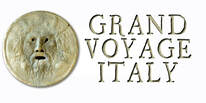|
"Non puoi insegnare niente a un uomo. Puoi solo aiutarlo a scoprire ciò che ha dentro di sé." "You cannot teach a man anything, you can only help find it within himself." Copyright, 2014-5 - Finzi Photography, All Rights Reserved. Driving the winding, treacherous road from Castlemezzano to Pietrapertosa, we came upon this horse. His front legs were tied together to keep him from running off. He seemed to be grazing calmly at the edge of a high meadow a few miles from the cliff town.
--Jerry Finzi (Danny's birthday is today! Buon compleanno, Danny!)
"I've been to the Leaning Tower of Pisa. It's a tower, and it's leaning. You look at it, but nothing happens, so then you look for someplace to get a sandwich." Rebirth of an icon: Crowds flock to see Rome's Trevi Fountain burst back into life after
£1.4million transformation
Read more: http://www.dailymail.co.uk/travel/travel_news/article-3301612/Now-s-fashion-makeover-Rome-s-Trevi-Fountain-opens-following-1-4million-Fendi-transformation.html#ixzz3rlFugqx6  I thought long and hard about doing some sort of tribute to the people lost in the madness of terrorism in Paris. I didn't want to do a Meme with some mushy saying or poem. I didn't want to post the ban-the-bomb (peace) sign newly drawn with the Eiffel Tower in the middle. I didn't want to post a candle burning. But then I thought about what I felt inside when I watched the horrible events unfold on TV over the weekend... You see, Paris has been a part of me for so long now. I can't help it. I sold everything, left my job as a top photographer in a large studio in Manhattan back in 1974 and moved to Le Bell France. I lived in Paris in the 19th arrondissement near Parc Butte Chamont--right next to the the neighborhoods where the shootings and bombings happened. I had a tiny, one room garconnierre apartment, six flights up, no lift, with a Turkish squat-down toilet in the hall shared by an old lady across the hall who used it to empty her chamber pot. I remember a nearby neighborhood filled with immigrant Arabs--looking like a slum. I also remember the Arab men hanging out by the hundreds on the Boulevards in the area--no jobs for them. Even the street-gutter sweeper jobs (the kind with hand made twig brooms) at the time were taken by Frenchmen. I shopped for wallpaper and paint and baguettes and chicken and cheese and umbrellas in its markets and les Grands Magasins. I got sick and went to doctors there. I drove everywhere in that City of Lights on my 50cc Mobylette. In fact, I drove around the whole country on my orange colored Moby and saw most of the country... about 5000 miles worth. I stayed in Five Star fancy hotels and 3 dollar a night 1 star pensions where meals were included. I've had lunch in Roman arenas and saw roman temples and even a pyramid. I saw so many castles on the Loire River that I grew bored with them. I saw and heard people playing music on hurdy-gurdys, accordians, Indian squeeze-box keyboards, mandolins, guitars, flute, cellos, French Epinettes (a type of dulcimer) and one man band rigs--all for free. I learned how to drink and appreciate wine in many of the most famous wine regions. I ate peaches the size of grapefruits. I learned to drink my "Coca citron" without ice. I had hundreds of sheep pour out of a gate like liquid pours over a waterfall.... blocking my path, but why would I mind? I camped in a farmer's field (almost getting run over by a harvester next morning) and set up my tent stream side along with a gypsy horse drawn caravan, only to waken the next morning and see a small boy riding this huge workhorse around the morning misty field... I almost cried at the sight. I camped, rain deluged, for 4 days in a river valley plagued by millions of tiny frogs--under every step I took. I camped on the sands of the Côte Atlantique right next to huge concrete bunkers from WWII. I rode the téléphérique up to Mont Blanc and then the cable car over the glacier to Italy. I walked through an ice cave. I swam under the Pont du Gard, a 2000 year old Roman aqueduct and walked across its top tier. I've been to where Picasso lived and to the bedroom where DaVinci died. I saw the magical glow of the Mona Lisa, Monet's Water Lilies, Van Gogh's self-portrait and Renoir's luscious nudes. I even visited the inspiration for the Disneyland castle--Mont St. Michele. I've seen the Coast of Normandy where so many Americans died and where a bombed flat village was totally rebuilt stone by stone by its citizens. I've smelled the lavender and roses as I drove down from the foothills of the Alps into the perfumed town of Grasse. The French are nice, warm people--once they get to know you, that is. They are French, after all. I made friendships. A jewelry designer. Another photographer. A cartoonist. A suburban window salesman. A young soldier. An international diamond smuggler and the head of a worldwide record label (believe it or not--both the same person). A musician. A bread baker. A motorcycle mechanic. I even ran into Julia Child and her husband once--while we waited online at the American Express office changing traveler's cheques into Francs. I even shared a small meal in the humble medieval dwelling of an old peasant woman who made a living by carving wooden shoes--she saw me having a pastry on the back of my Moby and invited me in to share some home made wine. And in Paris, the laborer who purchased my Moby before I returned to the States invited me for drinks and then to his home where his wife and family set out a huge feast just for me... yes, just for me. Thank you Joseph. I worked a bit in Paris, too. I went on business appointments to show my portfolio around. Zoom Magazine was tops at the time and they loved my work. The largest studio in France wanted to hire me as their still life department's studio manager. The Chef (Boss) sent his personal secretary with me to the Prefecture de Police to get my Carte de Travail but I was turned down and given 30 days to leave the country. You see, the world economy was in the dumpster back then and Paris wasn't letting any new workers in--except the immigrants from it's Muslim friend countries. Unlike today, where most of their power needs are met with nuclear or solar, back then they were dependent on the Middle East for 90% of its power needs. So I returned to the U.S. with about 500 bucks in my pocket and a great experience behind me. I've returned several times since. Once along for 6 weeks after I had already established my own advertising studio in Manhattan. I wanted to check out the possibility of moving back to Paris and opening a studio there. It had gotten way too expensive even to consider by that time. In '74 when I lived there my apartment cost 46 dollars a month and I could have bought a country fix-up villa for around 10 grand. By the Early Eighties, even a tiny studio would have cost $1200 and a house in the countryside would have come close to half million or more. To duplicate the 5000 square foot studio I had in the Flat Iron District in Paris would have cost over a million. So I came home. Lisa and I had our honeymoon in Paris too. Those memories are very special to us... a romantic hotel room overlooking the Seine and the Notre Dame. We still remember the Tweet, Tweet, Tweet of that traffic policewoman near the Quay... Paris--and France itself--is part of me. Actually, my Voyager friends might think this is odd to admit, but France is more inside my soul than Italy is. This weekend, Lucas asked me to talk in French after hearing of the nightmare there. So I spoke for several minutes in French and realized that when I speak French (and I speak poorly, I admit it.... though my accent is pretty good) I actually find that I think in French. When I speak Italian, I still have to ponder and translate in my head before the words come out. So my tribute is my memories. Thank you, Paris for becoming part of me. Thank you France for giving me so much during my Voyages. I feel your pain. I shed French tears. Prende courage! 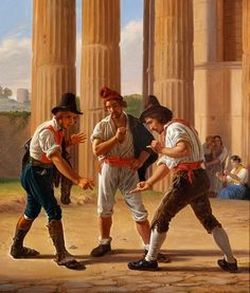 The TV show Big Bang Theory is one of our family's favorite shows. One of the the funniest episodes has genius Sheldon and his comrades playing a variation of Rock, Paper, Scissors as the ultra nerdy "Rock, Paper, Lizard, Scissors, Spock". "Spock" is signed using a Star Trek Vulcan salute, and "lizard" is a hand forming a sock puppet mouth. Spock smashes scissors and vaporizes rock; he is poisoned by lizard and proven wrong by paper. Lizard poisons Spock and eats paper; it is crushed by rock and decapitated by scissors. Now, Lucas get's this and can play it, but my brain just won't work fast enough to calculate who beats who fast enough. There's a much simpler, although extremely fast version that might be at the root of all finger games: Morra is an Italian finger counting game that was played for a few thousand years in ancient Rome and Greece. Some say it began as a way of making decisions between two parties, but it seems it would only lead to more arguments, it seems more than likely that historically this has always been a betting game. One can easily picture Roman Centurions gambling away their rations on this simple game. Morra is more than likely what the Bible refers to as "casting lots". In ancient Rome, the game was called micatio, and playing it was micare digitis (literally, flashing the fingers). There is an old Roman proverb about an honest man: dignus est quicum in tenebris mices (he is a worthy man with whom you could play micatio in the dark). Micatio even came to be used to settle disputes over the sale of merchandise in the Roman forum, a practice that was eventually banned. Today, morra is played throughout Italy (in Sardinia, it's called sa murra) and Greece, and in parts of Spain, Portugal, France (called la Mourre), Corsica, Cyprus, and up through Croatia and Slovenia. In Spain there is a variation where coins are tossed instead of fingers. It's also popular in "Little Italy's" around the world. In my neck of the woods, Hazleton, Pennsylvania, an annual tournament is held in February. 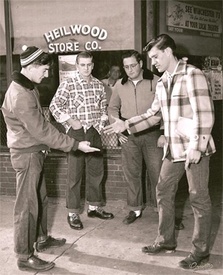 I will admit that as a kid we used to shoot Odds and Evens to help us make big decisions... Me, "Let's go to the movies"... my friend Sam, "Let's go down The Cliffs to play". Me, "Let's shoot Odds & Evens to decide. I'm Evens.... One, Two, Three, SHOOT! Ok, the Cliffs it is!" There are many variations of morra, most played with two, three, or more players, often in teams. In the simplest, two player, two fingered version, one person is designated the Odds player and the other is Evens. Players hold one hand count together "uno, due, tre, sparare!" (One, two, three, shoot!). Immediately, both players hold out either One, Two or Zero fingers (Zero is a fist). If the fingers of both players adds to an even number (two or four) then the Evens player wins. If not, the Odds player (with one or three) is the winner. 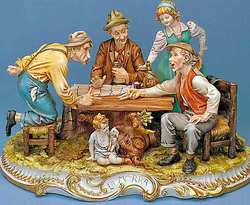 Of course, another more complex version for two players would be to use all five fingers and a fist for Zero, where the possible sums would run from 0 and 1 through 10. Same rules apply: The odd some gives a point to the Odds Player, the even sum awards a point to the Evens player. In another popular version, all players guess at the total sum. They throw out a single hand, each showing zero (a fist) to five fingers, and call out (at the same time as the throw) their guess at what the sum of all fingers shown . If one player guesses the sum, that player earns one point. If no one guesses, they go again. The first player to reach three points wins the game. Many versions of Morra are strictly gambling games--the winner earning cash equal to the sum of fingers displayed. The way many Italians play it, there is a mix of strategy, luck, skillful planning, a crazy glare at the competition and intimidating trash talk at a very loud level. While some may play sitting at tables, others make this a very physical, full body sport standing with both bodies and fists of fingers thrust toward one other--looking more like a brawl than a simple hand game. Being loud while "shooting" is part of the machismo of this game. While many play for money, others play for trophies--believe it or now, there are Morra clubs around the world that make a pretty big deal out of this finger game. Here's one team version of the game from the IFC (Italian Fingers Champion) Morra Club: "Double Elimination Teams of 4 members 12 points per leg 3 legs per game No zeros – must throw 1-5 Total amount of teams will be thrown in a hat. At random numbers will be drawn with the highest number seeded against the lowest number for round one. Round two, Winners will be seeded against the winners from round one in order of their original seed. Losers likewise, will be seeded against other losers from round one in accordance with their original seed. Losers of Round two from the losers bracket are eliminated. Rounds will continue until a team out of the Winners bracket only remains. They will be seeded against the remaining team from the Losers bracket. In order to be crowned champion, the Winner's bracket representative must beat the Losers bracket representative once. The Losers bracket representative must beat the Winners bracket Champion twice in order to be crowned champion." Now, if you want to see how it's really played in Italy, check out the video below. I don't know about you, but I could never keep up with these regazzi! And here's another video of a champion match in New Jersey. And finally, the real deal. These guys are playing Morra in Barga in the Lucca provence of Italy... You won't believe the enthusiasm! --Jerry Finzi
If you enjoyed this post, please SHARE it and tell your friends to stop by... ciao! Lucas never heard about this and actually went to school today instead of taking the day off! National Pizza with the Works Except Anchovies Day is celebrated annually on November 12. Pizza with all of your favorite toppings, on the crust style of your choice, is on the menu as you, along with people all across the country, celebrate this day.
Whether your pizza is thin crust, hand tossed, thick crust or deep dish, top it with all of your favorite toppings (excluding anchovies) and use #PizzaWithTheWorksExceptAnchoviesDay to post on social media. Pizza Facts
With aggressive photo-bombing netting some costumed fakers €12,000 a month, action is needed By Michael Day, Rome @michael2day Even as restorers scrape centuries of grime from the Colosseum, Rome’s authorities are planning a ground level clean up by cracking down on the costumed legionnaires and centurions who pose for photos with tourists before demanding cash with menaces. The motley crew of faux-soldiers and gladiators from the ancient world who operate around Italy’s top monument appear more Carry on Cleo than Antony and Cleopatra. But that does not stop them pocketing upwards of €400-a-day from intimidated visitors. Some of the greedier legionnaires make up to €12,000 a month, which sounds extraordinary, but adds up, given they are said to pose for photos 10 times a day, on average – and often demand €50 or more a time. Commissioner Francesco Paolo Tronca, who is temporarily in charge of the capital following the ousting of Mayor Ignazio Marino, has said he wants the tawdry spectacle to end. (Click Here to Read More...) --Warning from Grand Voyage Italy: Don't make the mistake of trying to take your own photo of these costumed bullies. If they catch you lifting a camera and pointing it at them, they'll surround you, chase you down and bully you into paying 20 Euros for the mistake--or talk you into paying 50 Euros or more for them taking a photo for you. These guys are seedy... think of them just like the unauthorized Mickey Mouse, Pooh Bear and ratty looking Elmo costume thugs on Times Square in New York. --JF
If you really study the right hand of the David statue by Michelangelo, you'll notice the clenching and tensing of the muscles. His veins bulge while adrenaline floods his brain. You see, David has just decided in his mind to fight Goliath. He is determined. His hand shows that. He is in that place in between decision and action. It's that split second moment before jumping into a pathway which will change his life forever--except he still doesn't know the outcome. All he has is determination and prayers--and something heavy clenched in his grip... he'll have to load his sling fast... faster than ever before...
--Jerry Finzi
If you enjoyed this post, please tell your friends about us. Ciao! Names can tell a lot when researching our Italian roots. But there are some names which tell a sadder tale back several generations or so. Orphans and foundlings in Italy were given special names. This list includes the most common surnames used.
Some means of names are pretty obvious: Bastardo... for bastard. Della Femina for From a Woman. Dell'Amore means From Love. All are a testament to those who came before and the trials they must have gone through to get through troubled times of war or poverty or disgrace. Many suffered through the horrors of war or famine. Anyone bearing these Italian surnames should be proud of what their fore-bearers went through to give life to their children and their childrens' children. Although these names do have a high probability of being rooted in an ancestor being orphaned, there are exceptions to this. Amodio (Love God), Arfanetti (Orphan), Armandonada (Donated by Hand) Bardotti (The sterile hybrid offspring of a male horse and a female donkey) Bastardo (Bastard), Circoncisi (Circumcised) Colombini (Little Dove), Dati (from you) De Alteriis (Changling), De Angelis (From Angels) Della Donna (From a Lady), Della Femmina (from a Female) Della Fortuna (from Luck), Della Gioia (From Joy), Della Stella (From a Star) Della Casagrande (of the Hospital/Orphanage) Dell 'Amore (from Love), Dell'Orfano (the Orphan) Del Gaudio (of Grace & Goodness), Diodata (God Diven) D'Amore (Love), D'Ignoto (from Unknown), Diotallevi (God Raised You) Esposto, Esposito, Esposuto (Lost) Fortuna (Luck), Ignotis (Unknown), Incerto (Uncertain) Incognito (Unknown) Innocenti, Innocentini (The Lost Ones) Mulo (Mule), Naturale (Natural/Careless) Nocenti, Nocentini (Little Innocent), Ospizio (Foundling Home) Palma (when child is abandoned on Palm Sunday) Proietti (Thrown/Project), Ritrovato (Discovered) Sposito (Lost), Spurio (Illegitimate) Stellato (The Stars), Trovatello, Trovato (Foundling) Ventura, Venturini (Angels, Little Angels) --Jerry Finzi If you enjoyed this post, please SHARE it and give a LIKE. Grazie. Donald Duck is known as Paolino Paperino in Italy. He's extremely popular in not one, but two comic book series: Topolino and the monthly Paperino. His character is a bit dirfferent than the Donald we know here in the U.S.... He's a bit more like Goofly--the average Joe and his angry outbursts have been watered down guy always hoisted by his own petard. Enjoy this video of Donald, Daisy, Huey, Dewey, and Louie all dancing along to tarantella music... It's guaranteed to make you smile! 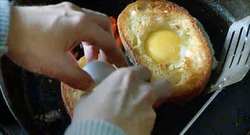 If you watch the video snippet above, you'll enjoy the scene from Moonstruck where Olivia Dukakas' character makes Uova nel Cestino (Eggs in a Trashcan) for breakfast for herself and Cher's character. The simple method of tearing a hole in some slices of Italian bread and frying up some eggs in the holes is classic... a peasant food, a food for the lower-working class, but it's also a very pleasant food. The appearance of it in Moonstruck has also made it an Italian-American classic, if not totally of Italian origin. But the history of this rustic dish seems relatively modern. There are various names for basically the same dish--slices of bread with round holes or squares cut from the center and eggs dropped in the hole for frying. They can be called by many names: Eggs in a Basket, Eggs in a Box, Toad in a Hole, Gashouse Eggs, Spit in the Ocean, Egg in a Frame, Eggs Looking at You, One-Eyed Jacks, Bullseye, Hen in a Nest, Hobo Eggs or Hole in One. Update November 10, 2015: Thanks to many of Grand Voyage Italy's Facebook friends, they've come up with additional names that their own families have for this dish... Bullseye, Holey Eggs, Eyeball Eggs, Chicken in a Basket, Framed Eggs, One-Eyed Susie's, Framed Eggs, One-Eyed Pete, Egg in a Hole, Eggs in a Hat and Eggy in a Basket. These eggy delights have also been seen being made in films other than Moonstruck: Mary Jane's Pa (1935, causing it sometimes to be called Guy Kibbee Eggs); Moon Over Miami, (1941--which named this dish either Betty Grable's Eggs or Gashouse Eggs); and in the 2005 film V for Vendetta. Even the TV show Friends had a character making this dish. In the little bit of research I've done, it seems that there is some version of these eggs--using the various names--not only in most parts of our country, but also in many European countries. I believe it was truly a peasant food that came to America with immigrants from all sorts of countries, which is why there are so many different names and variations in the method of cooking and ingredients. For instance, if you watch the Moonstruck video clip carefully, you'll see that there was also pickled pimentos added to the dish. Here's how I made mine: Ingredients: A single egg for each bread "nest" you are making 3/4 - 1" thick slices of a crusty Italian Pane di Casa or Country Round bread (or Challah). Olive oil for brushing the bread Butter and Olive Oil for the fry pan (use a mix of the two for browning) One 2-1/2" round cookie cutter (or use an upturned small jar) An Italian spice mix (either a commercial one or a mix of garlic powder, dried basil and dried oregano)
For "sunny side up" (You might want a lower flame for this):
For "over easy" eggs:
I served the Uova nel Cestino with a couple of country sausages and a side of home fries. We also had some home made tomato ketchup that went well with the bread and eggs, but to keep the Italian theme, ,a nice marinara would work really well. To finish our brunch we each had a refreshing small serving of Lisa's home made ricotta with fruit and honey.
And here are another two other delicious looking versions of Eggs in a Basket by Cookbook author, Camille Orrichio Loccisano. The first rustic version, with the addition of marinara with a dash of fresh chopped basil, really wets my Italian appetite. For the second version, the "nest" is created by scooping out holes in individual brioche rolls. Below the photos is the recipe for her Brioche Nest Eggs from her cookbook, Foodships: Living Life...One Recipe at a Time available on Amazon. I strongly suggest you pick up a copy (it's also available for Kindle), but not just for the recipes. Camille weaves the recipes around her life, her neighborhood, her friends and the sad loss of her teenage son. In fact, the cookbook was inspired by a recipe that was her son's favorite. "Living Life... One Recipe at a Time" isn't just the name of a cookbook. It's a philosophy of how to live past whatever life throws at us using great food as the means of forward motion. Brava, Camille! From Foodships: Living Life...One Recipe at a Time... Ingredients: 4 round dinner rolls 2 tablespoons butter, softened 2 garlic cloves, peeled 1/2 cup basil, chopped 4 jumbo large eggs Kosher salt and freshly ground black pepper 1/8 teaspoon crushed red pepper flakes 4 sun-dried tomatoes, diced Parmigiano-Reggiano grated cheese Slice off top of each dinner roll. Carefully remove the inside of the bread to create a hollow, making sure the bottom of the roll remains intact. Spread the softened butter on the inside of each roll. Grate the garlic cloves so that the garlic falls into the hole of each dinner roll. Sprinkle in half the basil. Crack an egg into each dinner roll. Sprinkle salt, pepper, and red pepper flakes. Add a teaspoon of diced sun-dried tomato and sprinkle with the remaining basil. Top with a generous amount of Parmigiano-Reggiano cheese. On a baking sheet, bake in a preheated oven at 350°F for 17 minutes or until bread is toasted golden at the edges. Camille’s Tip: Use eggs and butter that are room temperature, unless a recipe specifically calls for cold. In the end, no matter what you call it, you really have to try making Eggs in a Basket. It is very rustic, completely satisfying, kids will love making it--and eating it, and there are many ways you can put your own spin on it regardless of your ethnic heritage. Buon appetito! --Jerry Finzi Copyright 2015, Jerry Finzi - All Rights Reserved
From Atlas Obscura, by Dan Nosowitz
“Don’t eat gabagool, Grandma,” says Meadow Soprano on an early episode of The Sopranos, perhaps the most famous depiction of Jersey Italian culture in the past few decades. “It’s nothing but fat and nitrates.” The pronunciation of “gabagool,” a mutation of the word "capicola," might surprise a casual viewer, although it and words like it should be familiar to viewers of other New Jersey-based shows like the now-defunct Jersey Shore and The Real Housewives of New Jersey, where food often drives conversation. The casts are heavily Italian-American, but few of them can actually speak, in any real way, the Italian language. Regardless, when they talk about food, even food that’s widely known by the non-Italian population, they often use a specific accent. And it’s a weird one. “Mozzarella” becomes something like “mutzadell.” “Ricotta” becomes “ree-goat.” “Prosciutto” becomes “pruh-zhoot.” There is a mangling of the language in an instantly identifiable way: final syllables are deleted, certain consonants are swapped with others, certain vowels are mutated in certain places. Most immigrant groups in the U.S. retain certain words and phrases from the old language even if the modern population can’t speak it. But for people outside those groups, and even, often, inside them, it’s next to impossible to pick out a specific regional accent in the way a Jewish American says “challah” or a Korean-American says “jjigae.” How can someone who doesn’t speak the language possibly have an regional accent? Yet Italian-Americans do. It’s even been parodied; on an episode of Kroll Show, comedian Nick Kroll’s character Bobby Bottleservice, a Mike “The Situation” Sorrentino-type, describes his lunch in this thick accent, eliminating the final syllable of each item. “Cap-uh-coal,” he says, pointing at capicola. “Mort-ah-dell,” he says, as the camera pans over a thin, pale arrangement of mortadella. “Coca-coal,” he finishes, as the camera moves over to a glass of Coke. “Capicola,” made famous in its mutation by The Sopranos, gets even more mutated for comedic effect on The Office, where it becomes “gabagool.” I spoke to a few linguists and experts on Italian-American culture to figure out why a kid from Paterson, New Jersey, who doesn’t speak Italian, would earnestly ask for a taste of “mutzadell.” The answer takes us way back through history and deep into the completely chaotic world of Italian linguistics. Click here to read more... 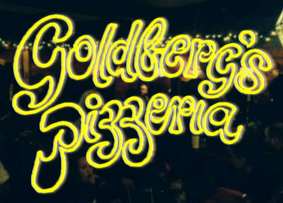 A re-created Goldberg's Neon Sign, as I remember it A re-created Goldberg's Neon Sign, as I remember it Back in the 1970s I was living and working in my loft/studio in Manhattan's Chelsea district. There were times when my staff and I would work late into the night and would have to stop work and get some sort of dinner--usually take out. The problem was that in those days, the Mom & Pop steam table lunch shops would close up after 6pm when all the factory workers went home for the day. They offered a blend of ethnic fare: Chinese, Italian and Spanish, often tastes of each ladled into a single aluminum take-out dish. About 2000 calories of fried chicken, BBQ ribs, fried or saffron rice or pasta, meatball, chicken parmigiana, you name it... all prepared fresh every day. I don't know how we got back to work after those lunches... 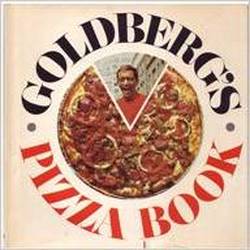 I found this rather musty copy of Goldberg's book online. His pizza recipe is generic, no secrets revealed I found this rather musty copy of Goldberg's book online. His pizza recipe is generic, no secrets revealed You see, there were very few of us photographers back then in the warehouse loft-neighborhood, and even less actually living in our lofts. It was an industrial district (in years to come, it would be known as the Photo District because of the hundreds of photographers that moved into the lofts). During the day our neighbors were silk screeners, printers, fabric cutters, machinists and shoe factory workers. There was even a puppet maker and manufacturer of backgammon and chess boards across the street. I was the first photographer and the first person to ever live in my 11 story building. There were perhaps only 7 people living in lofts on my street at the time. After hours, the streets around my studio were pretty deserted. Walking along on the streets was not a good idea. (Unlike today... it's a bustling, gentrified nightmare). The problem was, when we worked late, we had to go several long blocks either west or east of our neighborhood to the residential areas in order to find dinner. There were a couple of family style diners, an Arthur Treacher's Fish & Chips, one fast food burger joint (ugh) and a few restaurants that offered take out. But there were also a few pizzerias, and new to the neighborhood was Goldberg's Pizzeria--which quickly became one of my all-time favorite pizza joints. "A Jewish Pizza?" people always would declare. Now, the special thing about Goldberg's was that their pizza was different from any New York style pie. And although New Yorker's had no idea about its origins, the Goldberg pizza was a deep dish, Chicago style pizza. The dear, departed Larry Goldberg achieved a bit of fame for his "Jewish" pizza concept back then. He was on TV and newspapers did big write-ups on his pizza. Sure, Goldberg offered his attention getting Goldilox pie (with lox), and the Nixon pizza (ketchup and cottage cheese toppings), The Garbage Pizza, the A-Little-of-Everything Pizza and the SMOG (Sausage, Mushrooms, Onions, Green Peppers), but the sausage, mushroom, pepperoni or meatball pizzas were the real stars. In all, he offered only 8 types of pizza on his menu in various sizes. These were amazing pizzas! In 1970, New York Magazine and its Underground Gourmet column named his New York's Best Pizza over all others they reviewed. The sauce was sweet and the crust was thick and steamy in the middle while holding a decent crust underneath. The crust had a sort of sweet taste on the tongue (as I remember it), much more robust and bread-like than its New York style counterpart. Bits of cheese and misplaced sauce would burn a bit at the edges of the individual aluminum foil pans, but this only added flavor to the crust. Although I don't remember specifically, Goldberg's Pizza was made upside down, as all Chicago style pizzas are made--the toppings are on the bottom, the sauce on top, and lots of oregano finishing it all off. He pressed everything down with a spatula right before baking. (Click here to read a 1970 LETTERS to the editor section of New York magazine, where readers some readers debate whether a Chicago style pizza should have won the award... and as a bonus, Larry Goldberg himself wrote an interesting letter where he talks about opening his new location on "Third Avenue in the 20s". That's the one that I frequented! ..... And here's another great article I discovered called The Skinny on Fats, referring to Larry's nickname of Fats Goldberg given when he was a younger, heavier 320 pounds before losing 150 pounds on his "controlled cheating" diet which he wrote about in his diet books.) 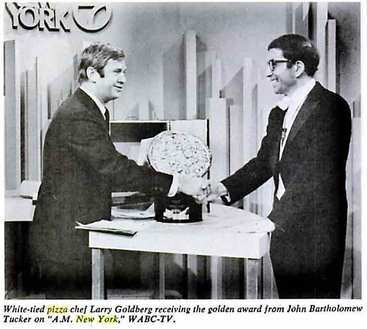 Every so often I think of Goldberg's Pizza and late nights at my studio. I remember the high backed booths (great for a private date) and the walls decorated with copies of Chicago newspapers. I also remember the various sized aluminum pans nailed up on the wall for all to see... it made ordering the size you wanted very easy. I even ordered a heart shaped pie once. Well, reaching back into my fond memories, I tried to remember the flavors, the texture of the crust, the taste of the sauce... and I decided I'd try to make my own recreation of a Goldberg's Pizza. The trouble is, Larry Goldberg always talked about his "secret ingredient" but never put it in writing. There were theories and a lot of talk about some detecting a taste of rye flour in the crust. I have no memory of rye... but I think I had an idea what that special ingredient might be. The texture was a tad gritty. The crust was sort of stiff and well done on the bottom and sides, but inside was steamy and on the sweet side... it was also a bit more yellow than a normal pizza crust. Kind of like a corn muffin, I thought. (Lightbulb) That's when I got my big idea to try... Adding corn meal to the dough. But how much... in what proportion? I even went out and bought some cheap, disposable 9 inch aluminum cake pans to bake them in--just like the originals. Ok, so here's what I did: Ingredients (for 2 - 9 inch, deep dish pizzas) Yeast: 1-1/2 tablespoons active dry yeast 1-2/3 cups water (at 115 ℉) 1 tablespoon honey Dough: 1 cup (to start) King Arthur's Bread Flour 1 cup Stone Ground Corn Meal (yellow or white, it doesn't really matter) 1 cup King Arthur's Whole Wheat Flour 1-1/2 tablespoons salt 3 tablespoons sugar 3 tablespoons extra virgin olive oil Toppings: Our Pizza Sauce (Click for recipe) or one of your own 16 ounces of part-skim mozzarella, shredded (Goldberg used part skim always) 2 tablespoons of dried Oregano Meat topping of your choice (Goldberg would use, pre-cooked, crumbled sausage, or sliced little meatballs, pepperoni, etc.) Preheat the Oven and Pizza Stone set on the middle rack to 450℉. You will need 2 - 9" cake pans oiled on the bottom and sides with Olive Oil (to be authentic I used 2 disposable aluminum pans for this recipe)
You really have to use your own best judgement here. As I learned recently when upgrading my wall ovens, no two ovens are alike. (Read about it here). Use your eyes to examine the pizza as it's baking. Ultimately, you want the bottom crust to brown in the same amount of time as getting the toppings cooked. If you find your crust isn't browning enough, try using a flat cookie sheet (not insulated) next time on top of your pizza stone (and under the deep dish pans in this recipe). Metal transfers heat quicker than a ceramic stone. To solve my problems with the new ovens, I've switched to using a pizza steel instead of a pizza stone. (Read how it solved my problems here). If you need to, adjust the time accordingly. You can use two dark 9" cake pans for this recipe, but you might have to shorten your baking time (and perhaps think about lowering the temp to 425℉). Dark pans brown much faster than light colored ones do. In the end, I think I re-created a decent representation of the Goldberg's Pizza. Sure, I can tinker with the sauce a bit (and I probably will, the next time... I think a tad sweeter, the sauce made only with crushed tomatoes). And I will try some rye next time, though I really don't think that was his secret ingredient. Perhaps you'll want to try your own SMOG or NIXON or even throw some lox on top to make a Goldilox. It's up to you to do Larry Goldberg proud. Bless you, Larry. You gave a lot of people full, satisfied bellies and great memories.... --Jerry Finzi, Pizzaiolo My finished Re-Creation of Goldberg's Pizza.... crunch in the crust, steamy inside.
|
Categories
All
Archive
June 2024
|




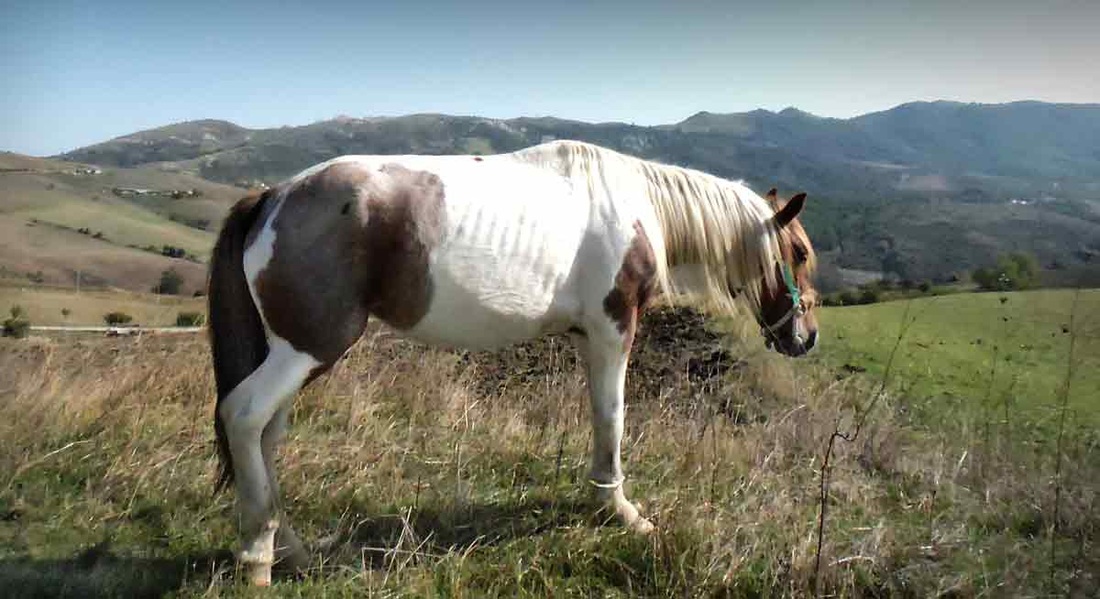
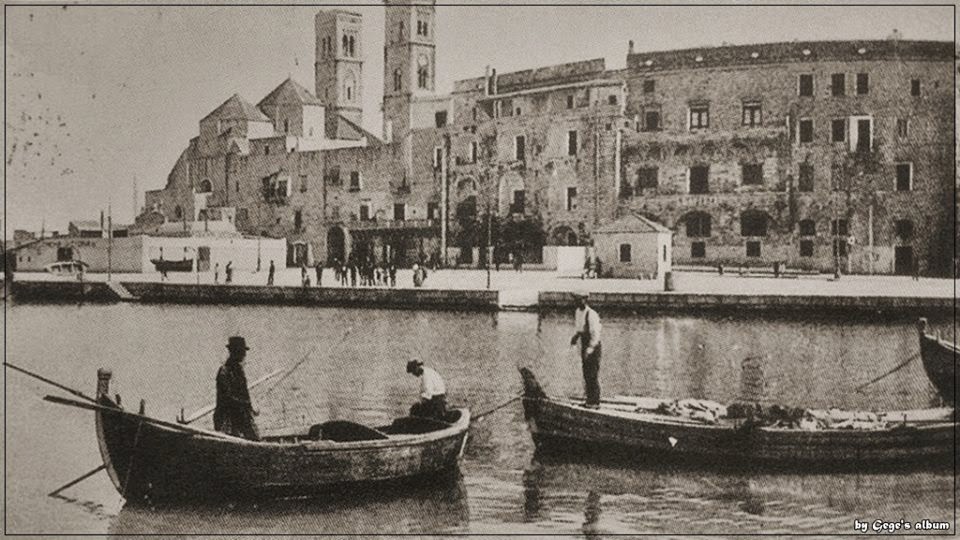

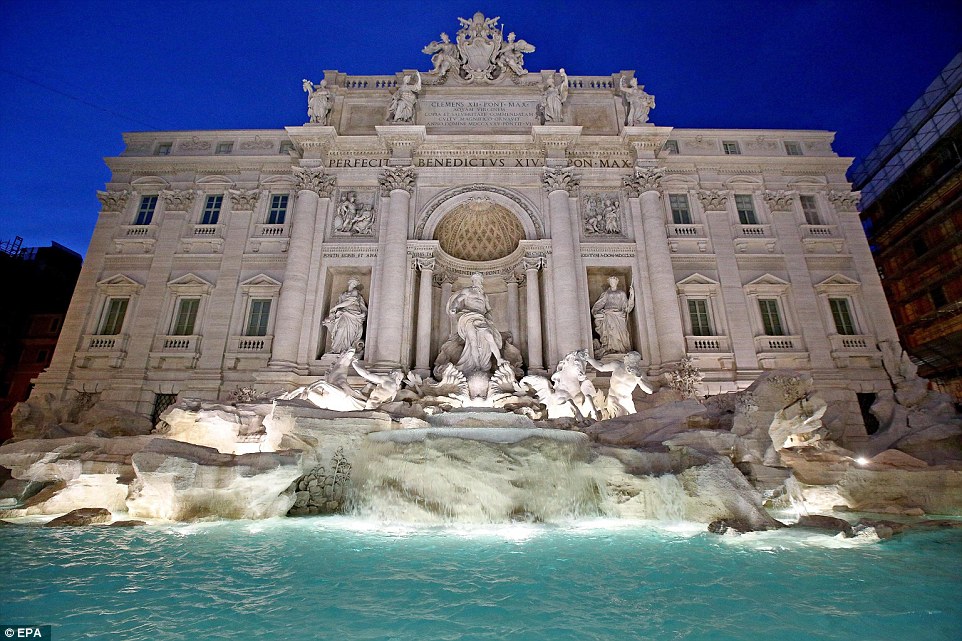
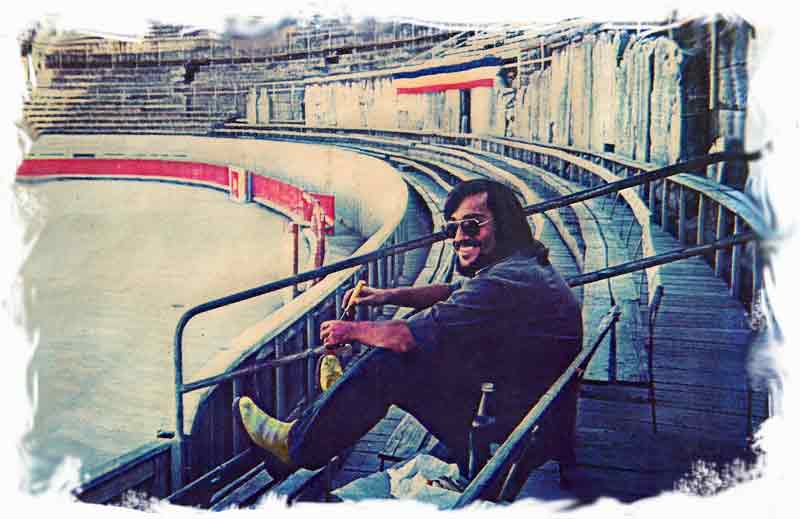
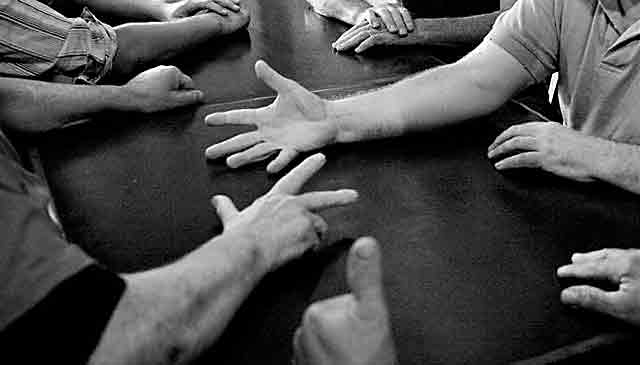
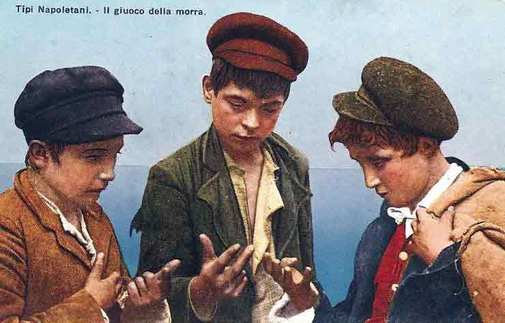
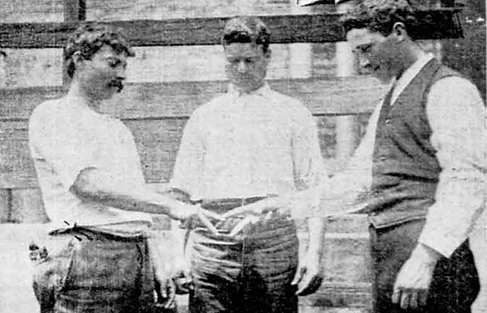
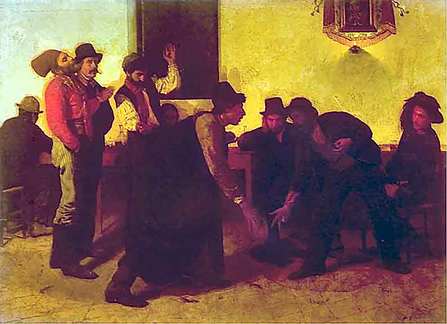

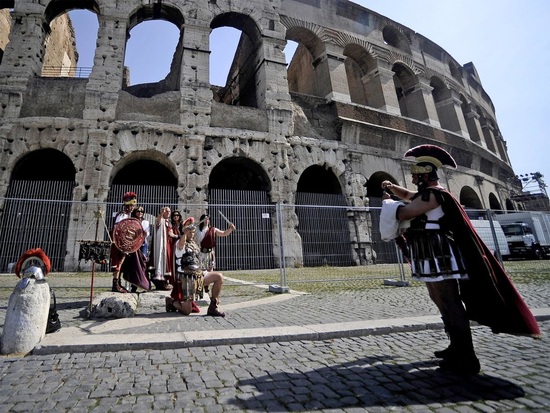
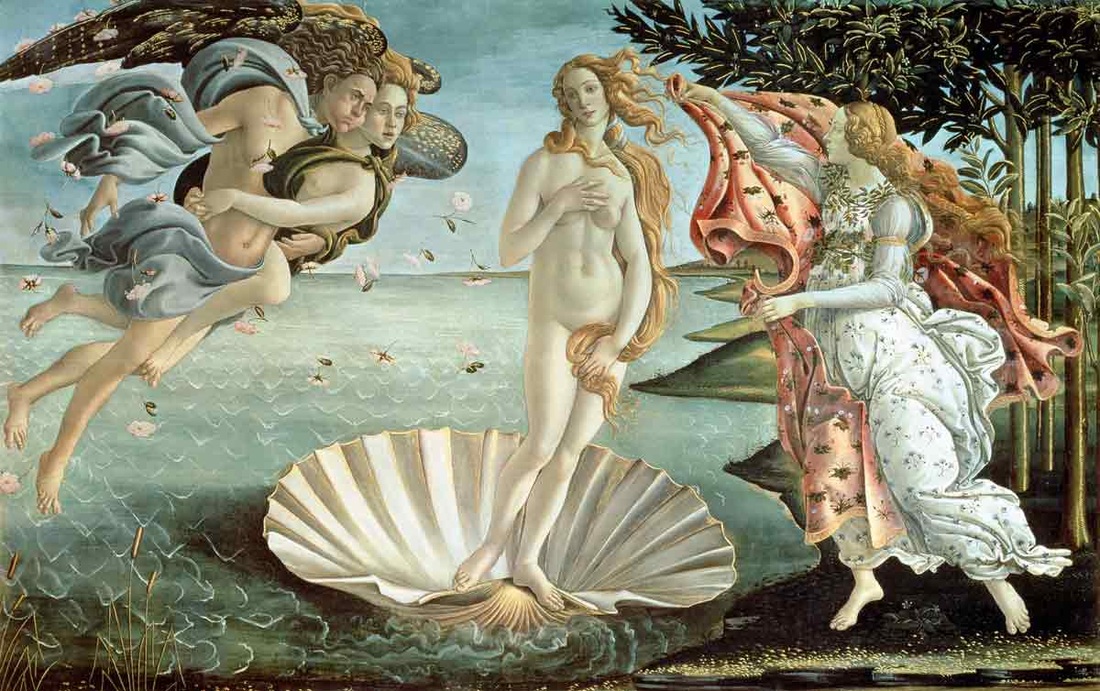
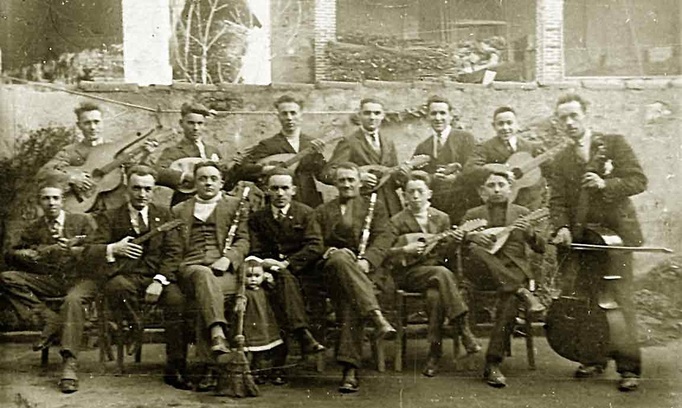
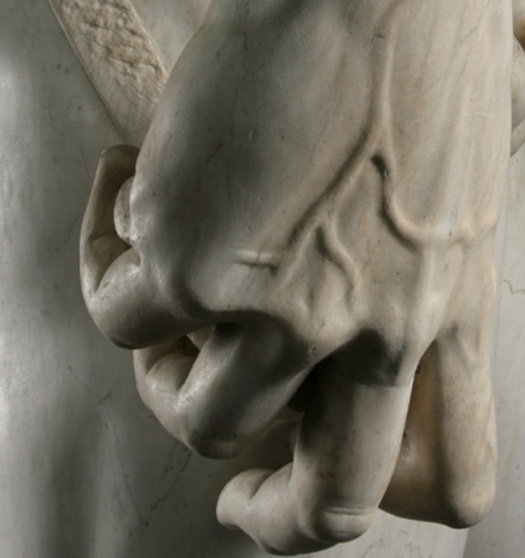
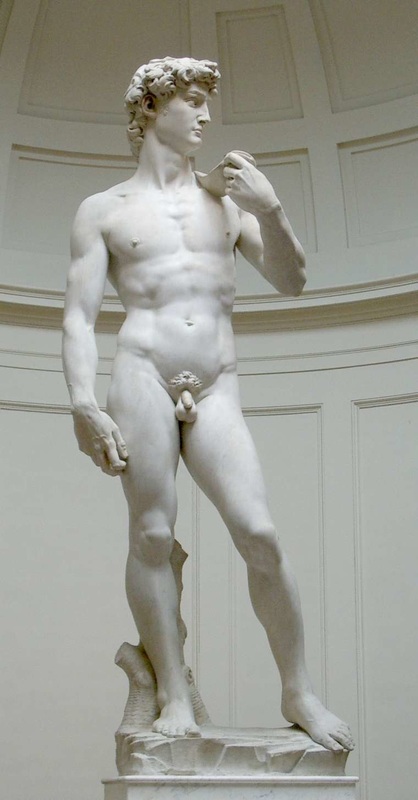
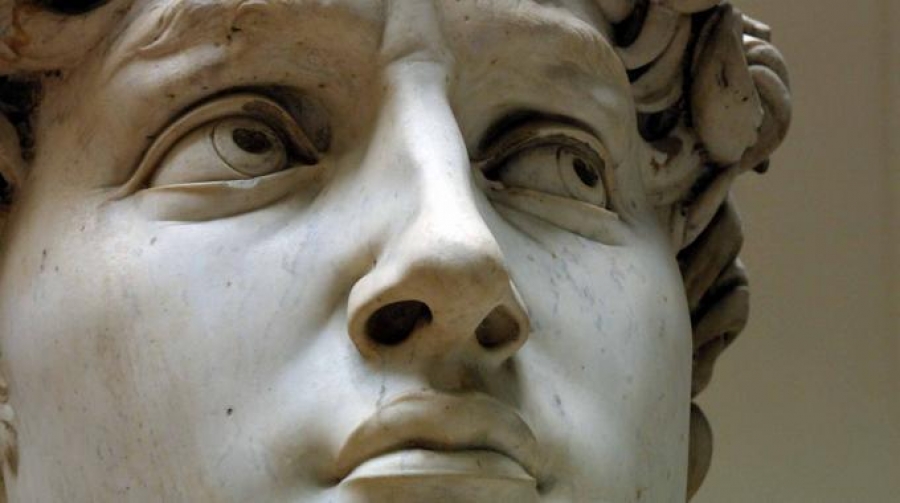
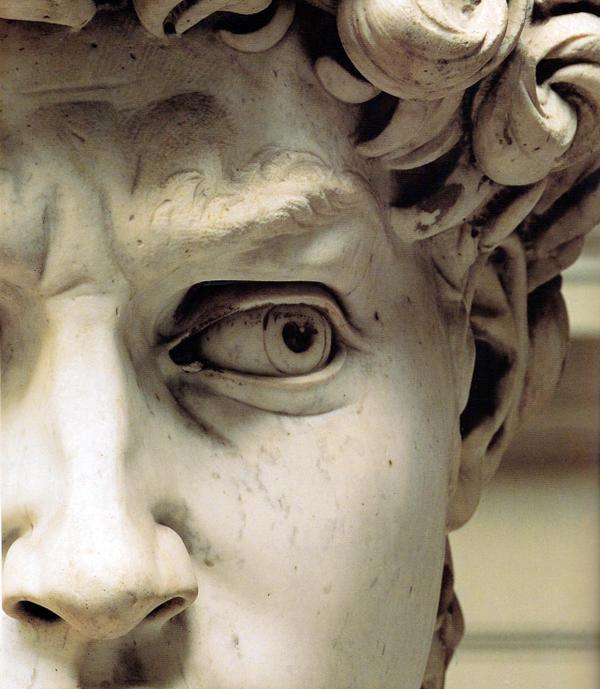
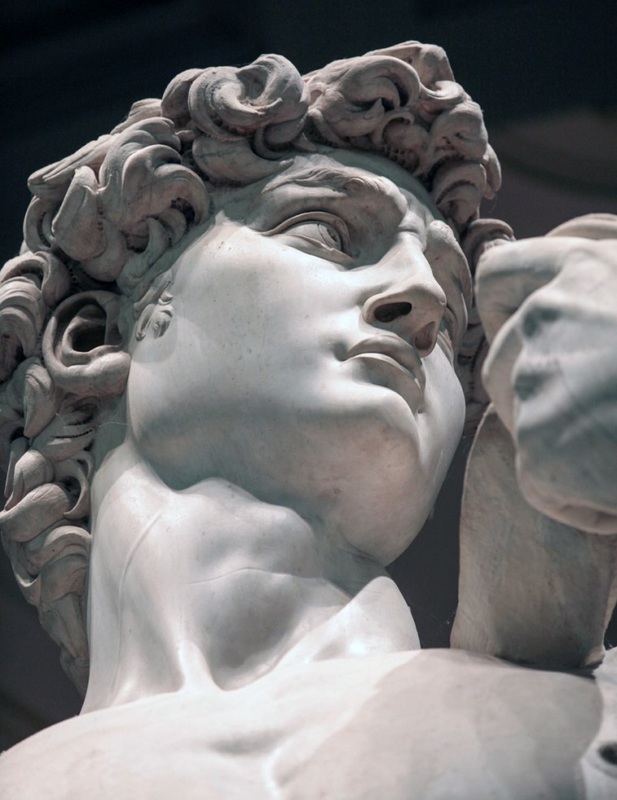


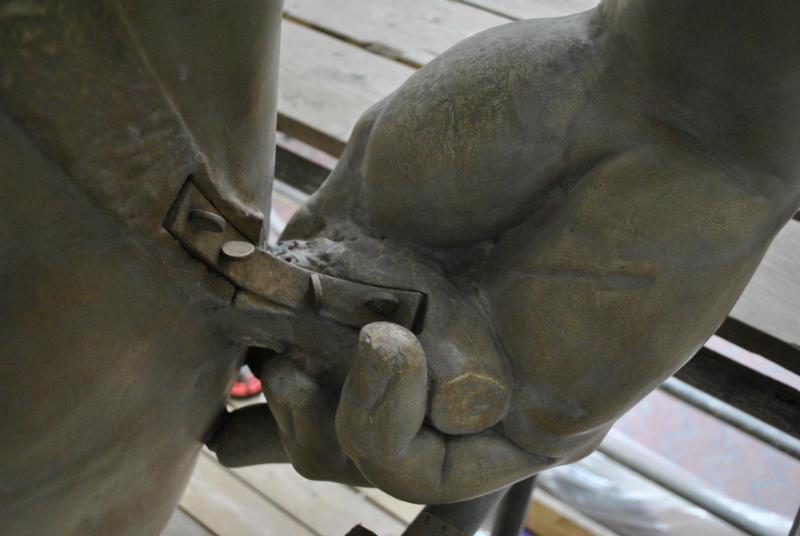
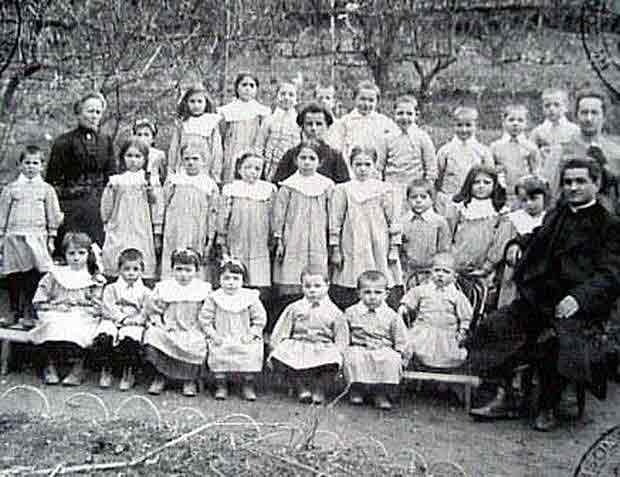
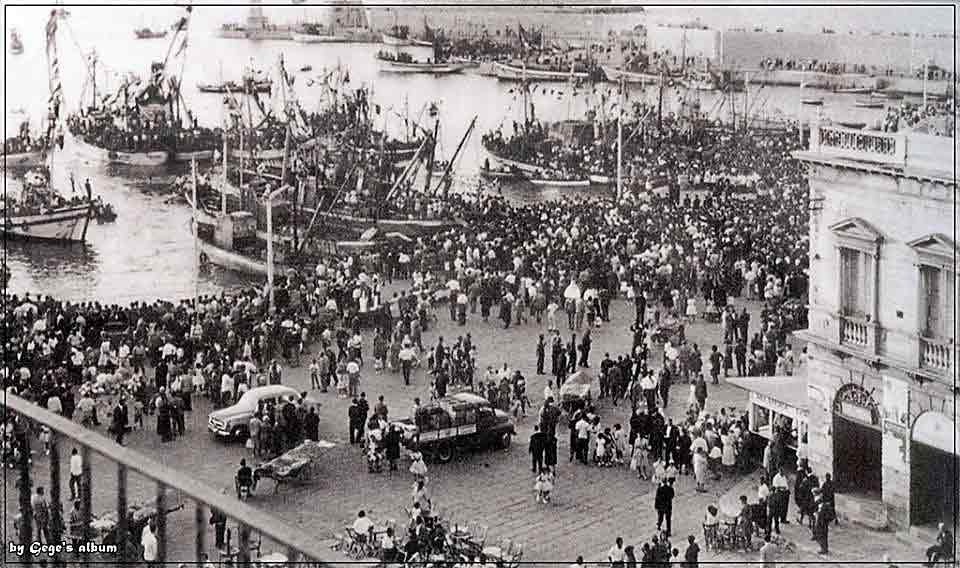
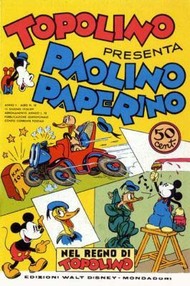
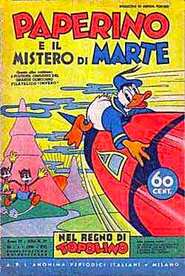
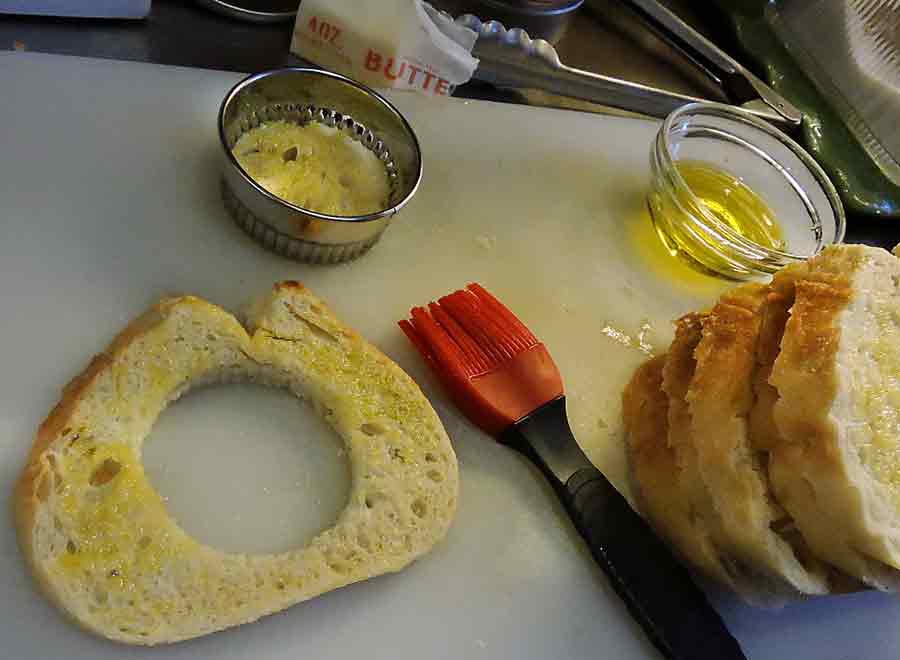
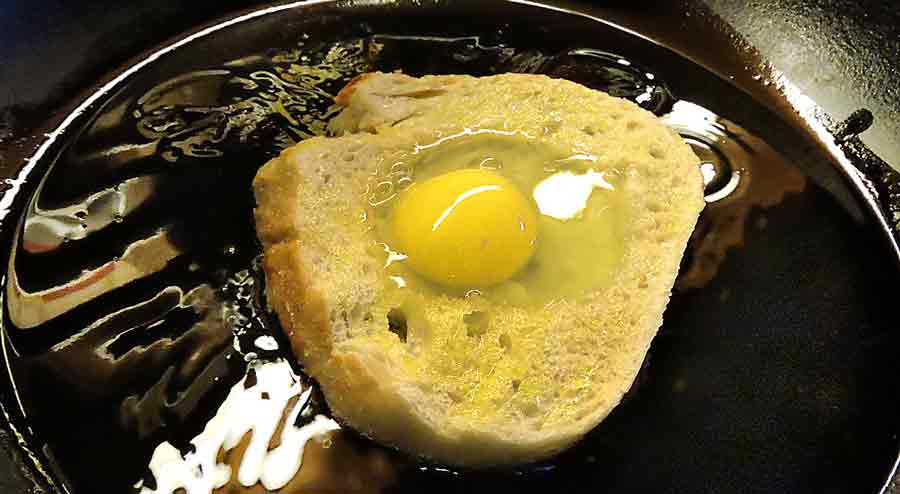

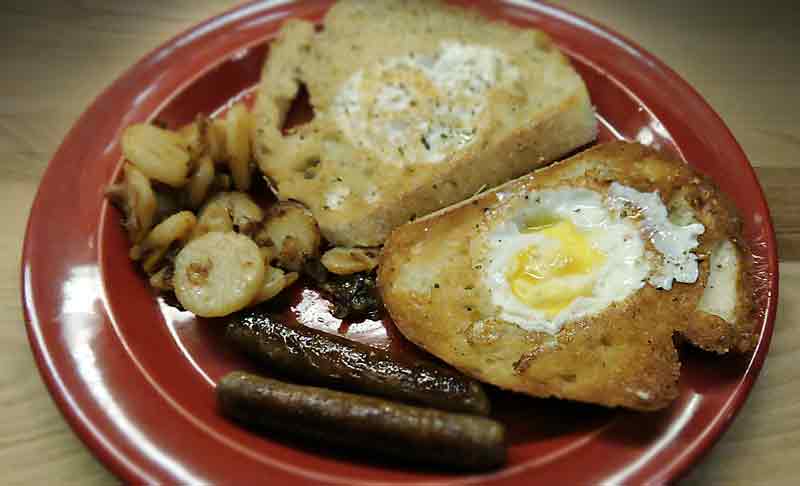
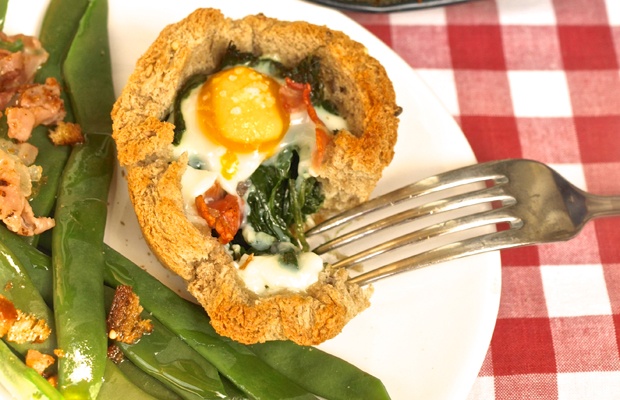
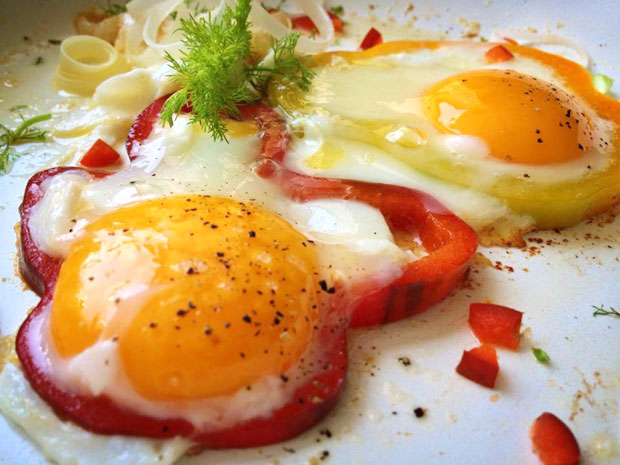

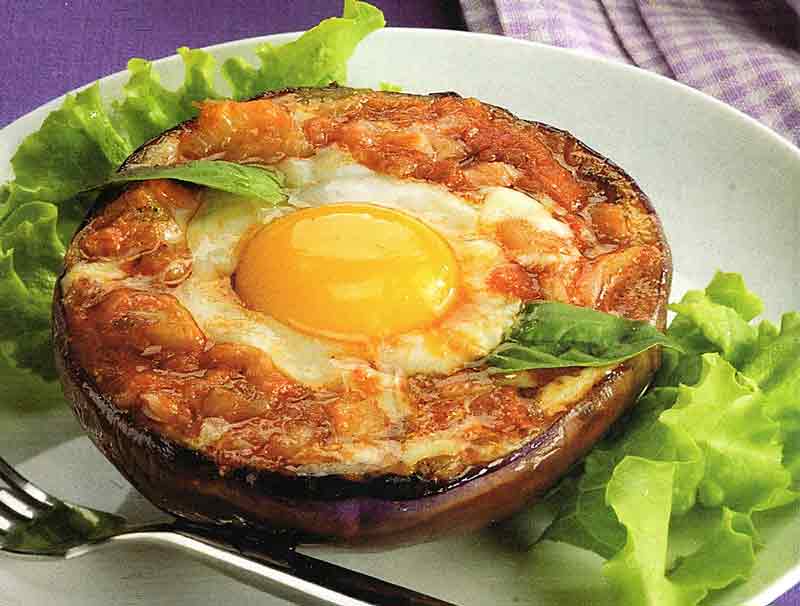
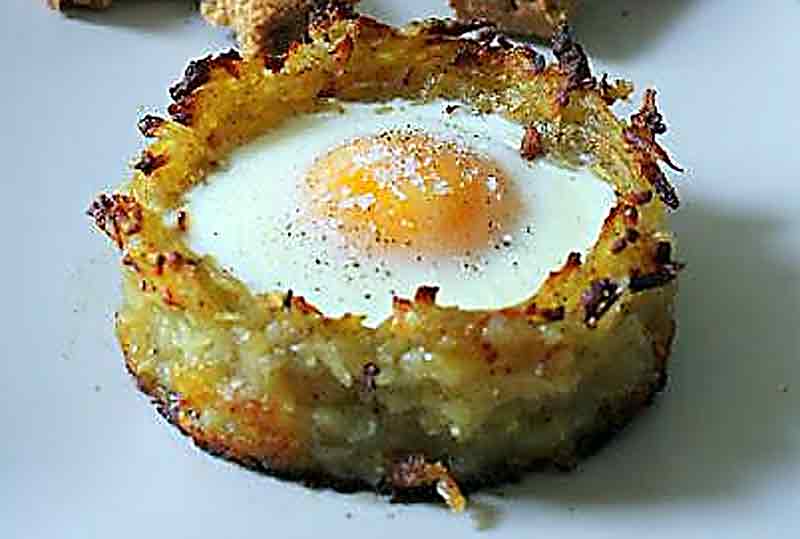

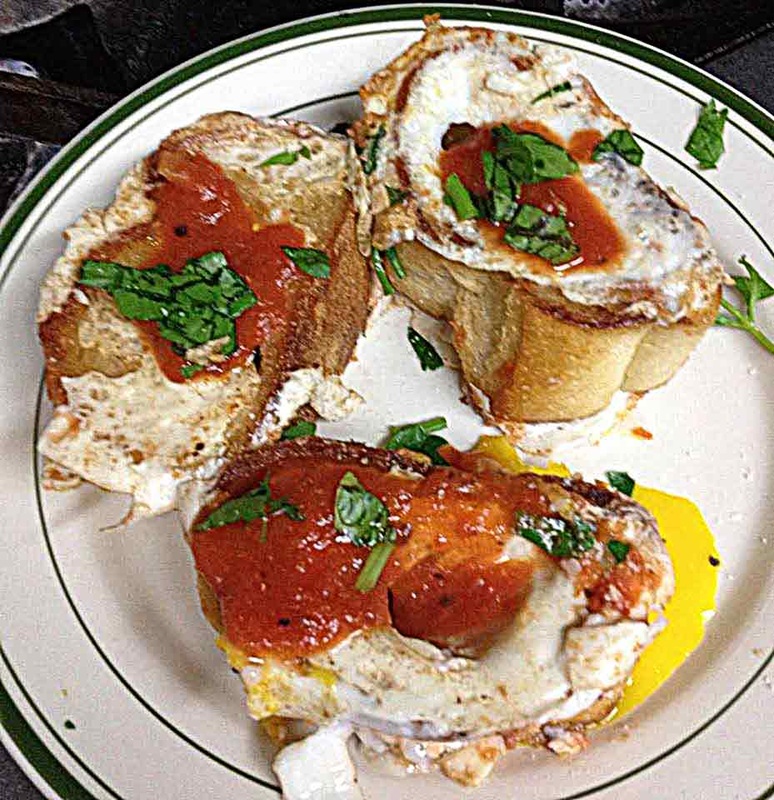

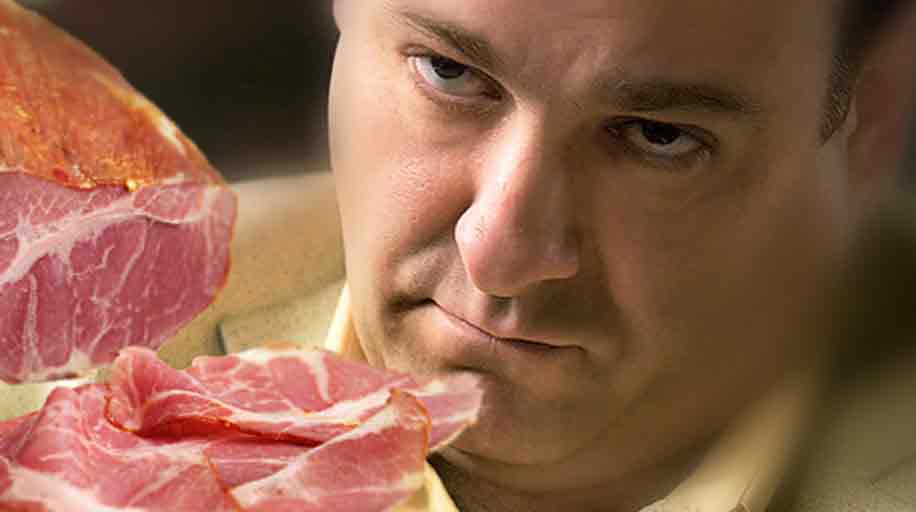
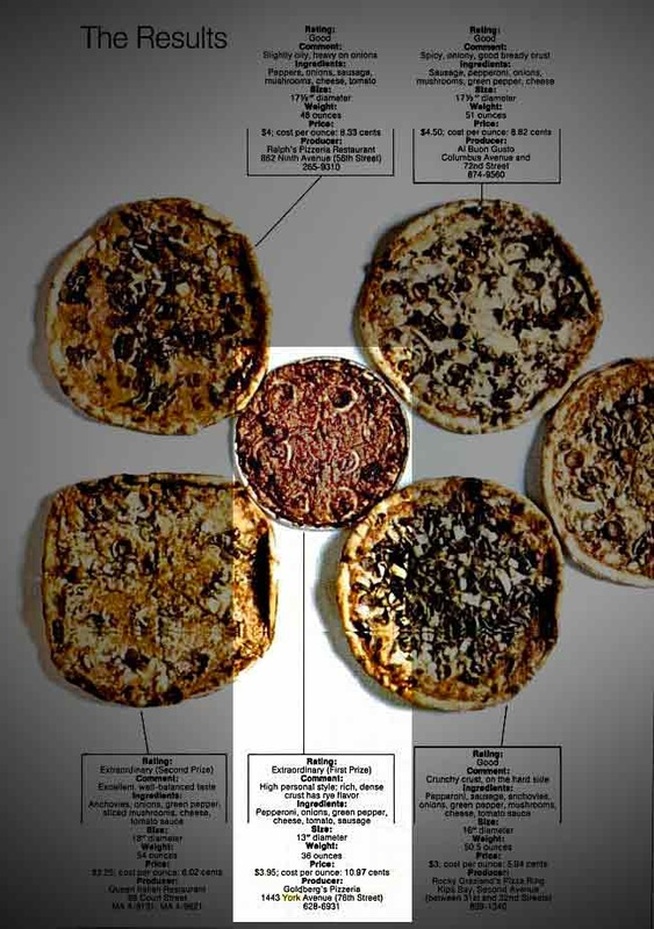
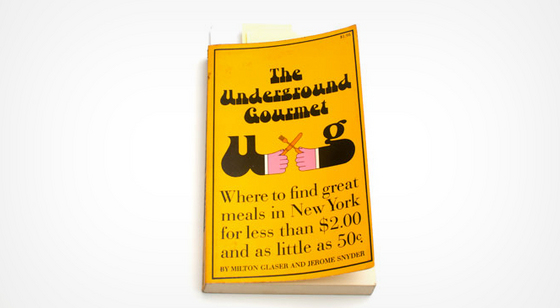
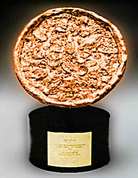

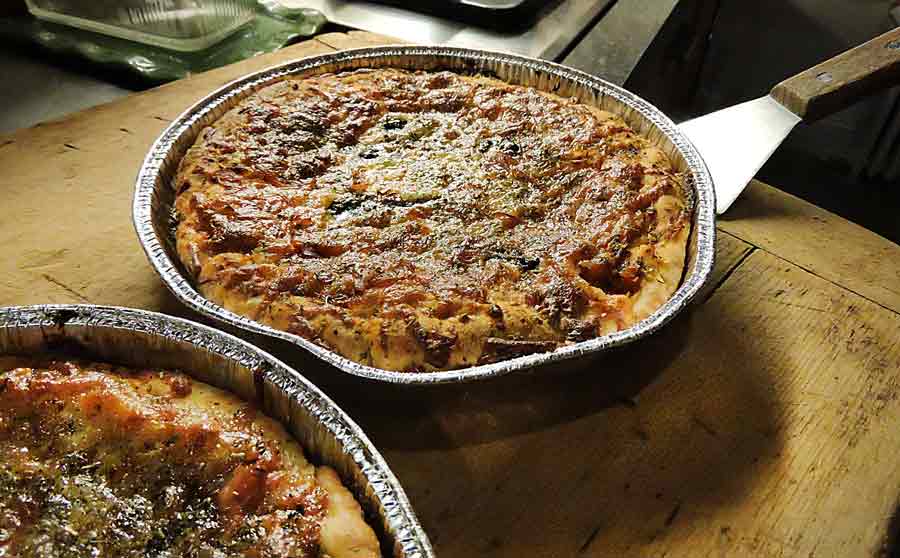
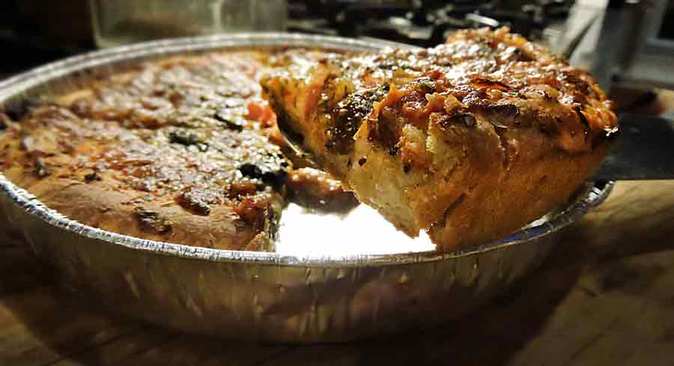
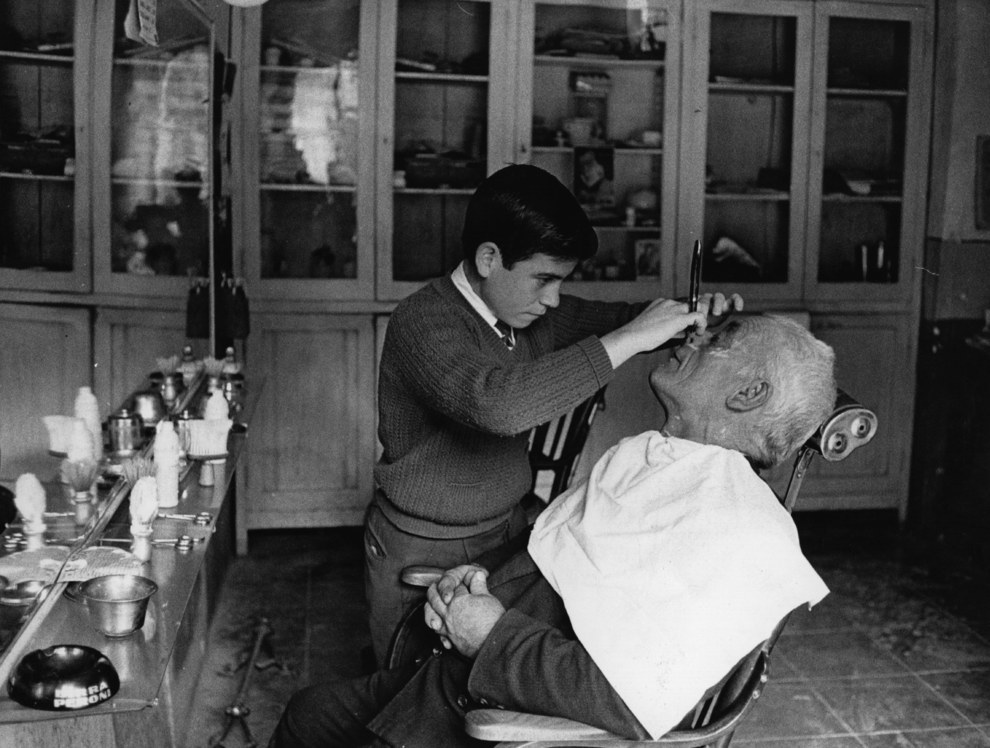
 RSS Feed
RSS Feed
